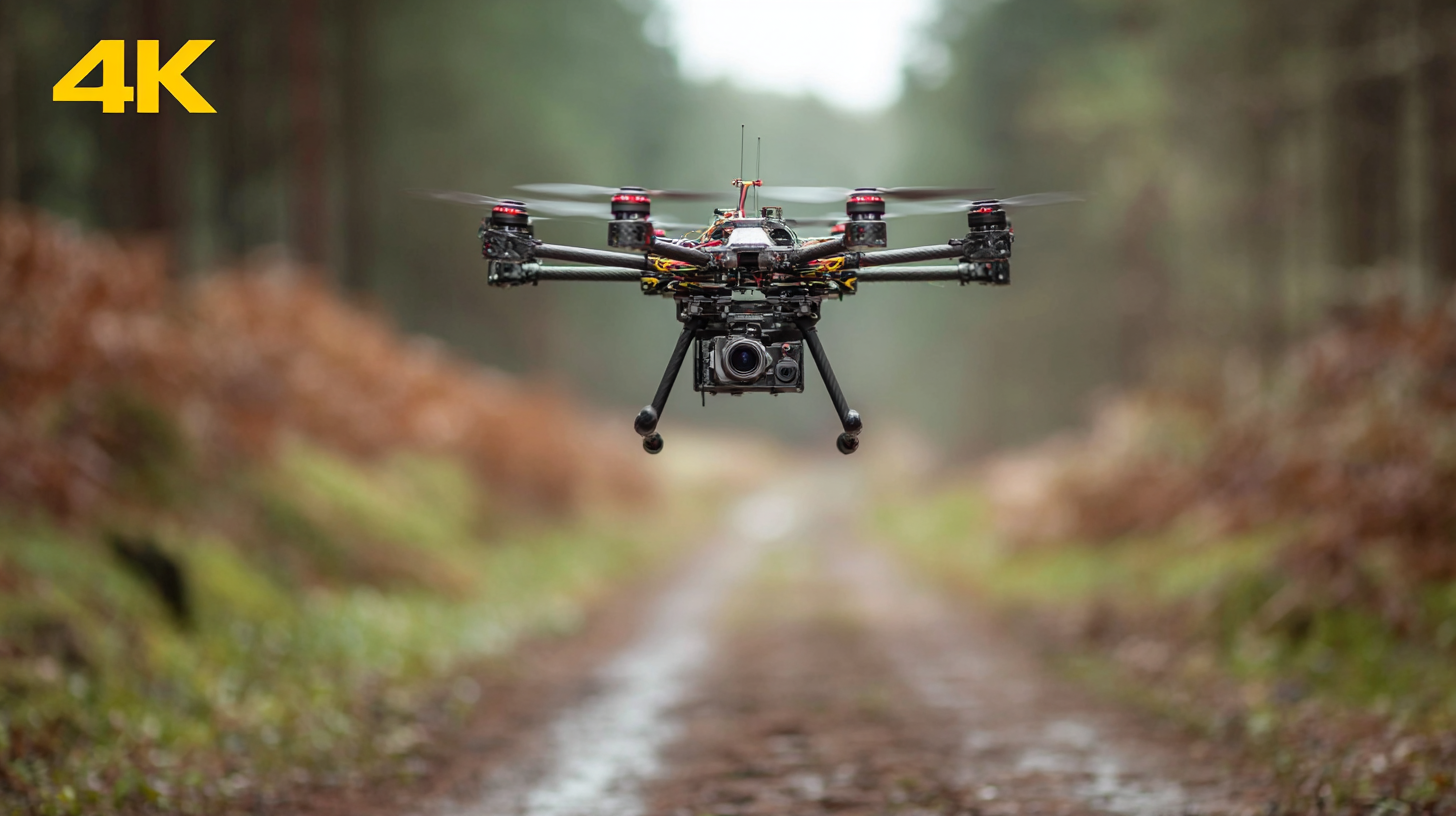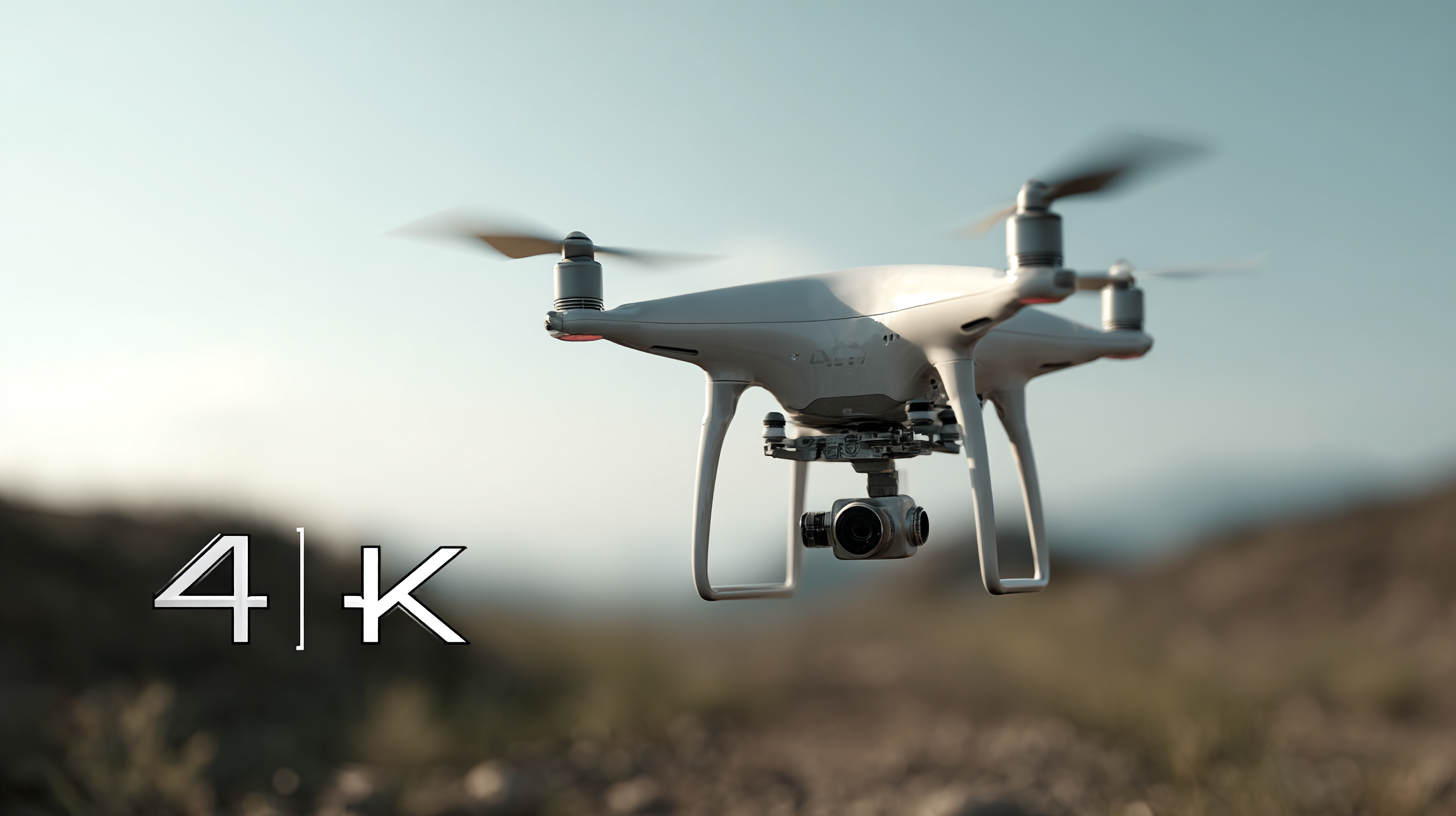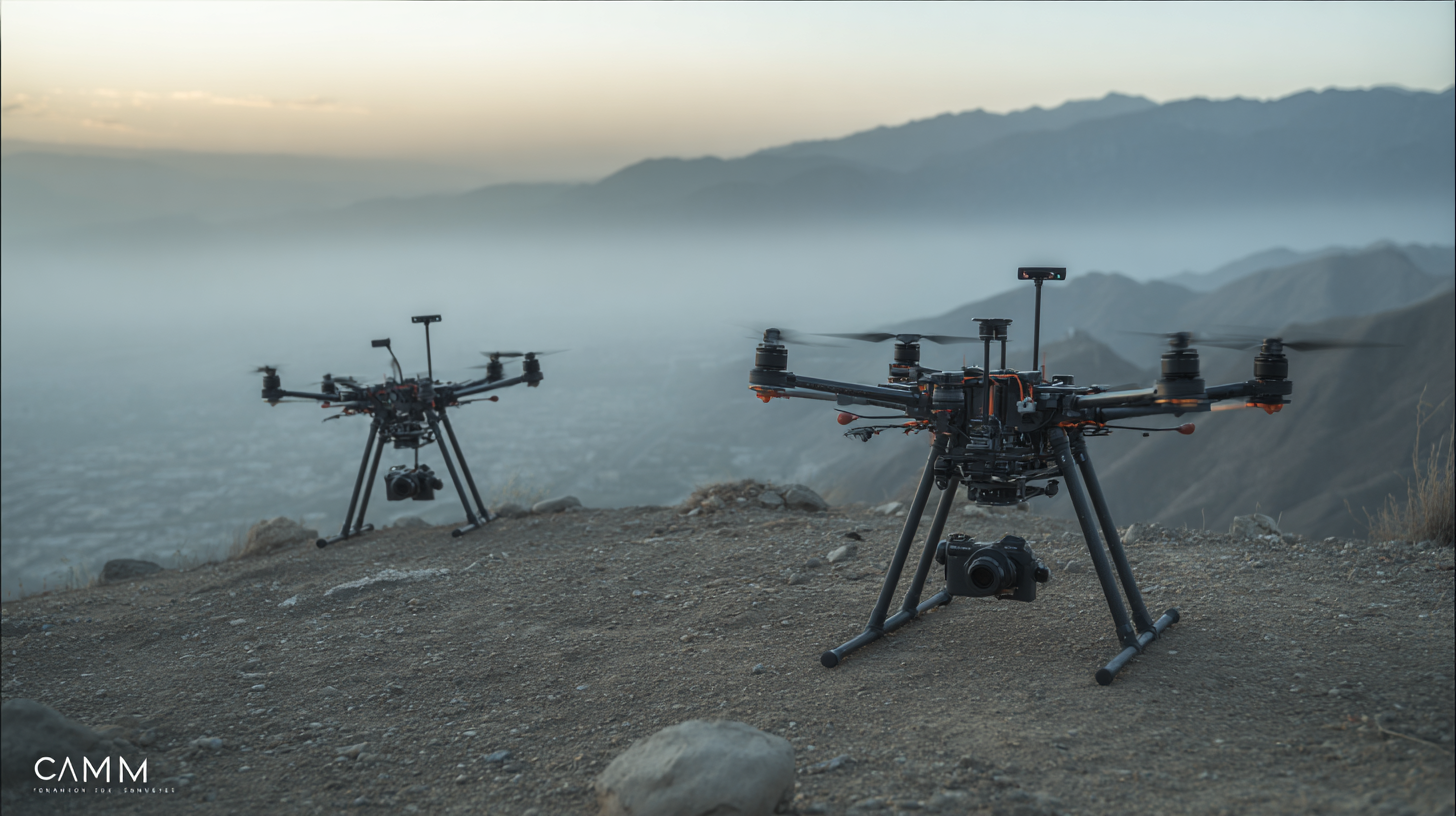The Future of Aerial Technology with Best Drone And Camera Solutions
As the demand for aerial technology continues to soar, the integration of advanced drone and camera solutions is reshaping industries worldwide.
According to a report by the Drone Industry Association, the commercial drone market is expected to reach $47 billion by 2027, driven largely by applications in sectors such as agriculture,
construction, and public safety. This burgeoning market highlights the necessity for robust industry production standards to ensure safety, reliability, and efficiency.
With innovations in camera technology enhancing aerial photography and videography, the potential for drones to capture high-resolution imagery is unparalleled.
As we delve into the future of aerial technology, it becomes essential to understand the various types of drones and cameras available, along with the standards that govern their production and operation.
The synergy between drone and camera solutions not only enhances functionality but also sets the stage for new possibilities in data collection and analytics.

The Importance of Export Compliance in the Drone Industry for Global Trade
The drone industry is rapidly expanding, with projections indicating that the global drone market will reach
$41.3 billion by 2026, growing at a compound annual
growth rate (CAGR) of 20.5% from 2021 to 2026.
As the demand for aerial technology increases, the importance of export compliance
in the drone industry cannot be overstated. Adherence to export regulations ensures that unmanned aerial systems
(UAS) are used responsibly and do not contribute to unauthorized access or military applications. For instance,
the Bureau of Industry and Security (BIS) has implemented specific guidelines that govern the export and
re-export of drones, which can impact a company's ability to penetrate international markets.
Furthermore, according to the Drone Industry Insights report, over 70%
of companies in the drone sector are facing challenges related to export compliance, which can lead to financial
penalties and damage to reputation. Hence, businesses must prioritize compliance strategies to mitigate risks associated
with global trade. Adopting best practices in documentation, following guidelines from international regulatory bodies
such as the International Telecommunication Union (ITU), and staying updated on changes in law are essential for
companies aiming to compete effectively in the global drone market.
Key Regulations and Standards for Importing and Exporting Drones and Camera Equipment
As the aerial technology landscape continues to evolve, understanding the key regulations and standards for
importing and exporting drones and camera equipment is essential for businesses and enthusiasts alike.
According to a recent industry report by ResearchAndMarkets, the global drone market is
expected to grow from USD 22.5 billion in 2020 to
USD 42.8 billion by 2025, driven by advancements in
camera technology and increased commercial applications. However, navigating the regulatory environment can be
complex, as various countries impose different restrictions and requirements.
 For those looking to import or export drones, it's crucial to familiarize yourself with the
Federal Aviation Administration (FAA) regulations in the United States,
which have set a precedent for drone operation and safety standards. Additionally, the European Union's
European Union Aviation Safety Agency (EASA) has developed comprehensive
guidelines aimed at harmonizing drone regulations across member states. Understanding these regulations not
only ensures compliance but also mitigates potential legal issues that may arise during international transactions.
For those looking to import or export drones, it's crucial to familiarize yourself with the
Federal Aviation Administration (FAA) regulations in the United States,
which have set a precedent for drone operation and safety standards. Additionally, the European Union's
European Union Aviation Safety Agency (EASA) has developed comprehensive
guidelines aimed at harmonizing drone regulations across member states. Understanding these regulations not
only ensures compliance but also mitigates potential legal issues that may arise during international transactions.
Tip: Always verify the certification and
safety standards of drone equipment before import. This can save you from potential penalties and ensure that
your products meet quality expectations.
Another important consideration is the tariffs and taxes associated with drone import/export. According to the
World Trade Organization, certain drone components may be subject to
special duties, affecting the overall cost. Businesses should conduct thorough market research and consider
consulting with customs experts to navigate these complexities effectively.
Tip: Utilize trade compliance software to
streamline the paperwork and ensure accurate reporting, which can save time and resources in the long run.
Market Trends: Growth Projections for Drone Technology in International Markets
The drone technology market is on the cusp of significant expansion, driven by diverse applications across various sectors. Projections indicate that the global e-commerce logistics market is set to soar from $441.55 billion in 2024 to an impressive $1.9 trillion by 2032, reflecting a robust compound annual growth rate (CAGR) of 20.04%. This surge is primarily fueled by the increasing reliance on drones for efficient delivery solutions, revolutionizing the logistics landscape. Not only are drones enhancing delivery speeds, but they are also contributing to cost savings and improving customer satisfaction.
In parallel, the unmanned aerial vehicle (UAV) software market is expected to reach $2.48 billion by 2033, with an anticipated CAGR of 11.57% from 2023 to 2033. As businesses increasingly recognize the vital role of advanced UAV software in optimizing operations and data collection, the demand for innovative solutions will escalate. Moreover, the agricultural sector is also adapting to drone technology, with projections indicating the agriculture drone market will grow from $61.1 billion in 2024 to $237.8 billion in 2032, showcasing an 18.5% growth rate. This trend reflects a global shift towards leveraging aerial technology to improve crop monitoring and management, heralding an exciting era for drone and camera solutions across international markets.
Navigating Duty Rates and Tariffs: Implications for Drone Manufacturers and Retailers
As the drone industry continues to grow, understanding the implications of duty rates and tariffs on manufacturers and retailers is more critical than ever. According to a recent report by the Federal Aviation Administration (FAA), the commercial drone market is expected to surpass $63 billion by 2025. This exponential growth is attracting not only manufacturers but also retailers who are eager to capitalize on the expanding consumer base. However, tariffs on imported components can significantly impact the overall pricing structure, making it essential for businesses to navigate these trade regulations effectively.
For instance, the U.S. Trade Representative's office has implemented various tariff rates on imported drones and associated technology, which can reach up to 25% for certain categories. These tariffs not only increase the cost of goods for retailers but could also lead to higher prices for consumers, potentially stunting market growth. A survey conducted by the Consumer Technology Association (CTA) revealed that 72% of retailers expressed concerns about how tariffs affect their ability to remain competitive. As drone manufacturers and retailers strategize to adapt to this challenging landscape, an in-depth understanding of the regulatory environment will be paramount for sustaining profitability and market position.

Ensuring Quality Assurance and Certification Processes for Aerial Technology Products
The advent of aerial technology, particularly drones and advanced camera solutions, is revolutionizing various industries, from agriculture to filmmaking. However, as this field grows rapidly, the importance of implementing rigorous quality assurance and certification processes cannot be overstated. According to a recent report by the Federal Aviation Administration (FAA), drone registrations have surged to over 1.7 million in the United States alone, highlighting the necessity for strict adherence to safety and operational standards. Ensuring that these aerial technology products meet established quality benchmarks is crucial for both consumer safety and the longevity of the industry.
Moreover, a study conducted by the European Union Aviation Safety Agency (EASA) indicates that a significant percentage of drone-related accidents stem from equipment malfunctions, underscoring the need for comprehensive certification processes. These protocols not only help prevent potential hazards but also promote consumer confidence in aerial technology. The future landscape of aerial technology will heavily rely on products that undergo stringent testing and quality assurance, ensuring they meet regulatory demands and operate optimally. By prioritizing quality and certification, the industry can pave the way for safer, more reliable, and innovative aerial solutions that benefit all stakeholders.
The Future of Aerial Technology: Drone Adoption and Camera Quality Trends